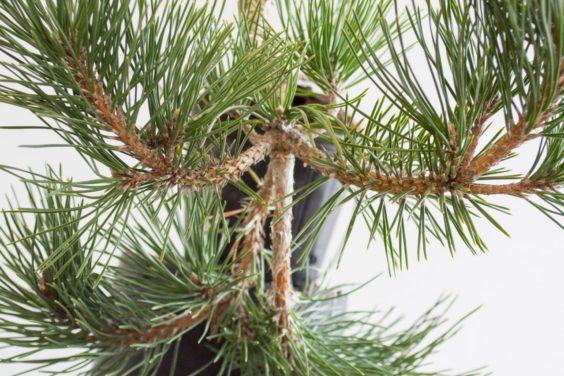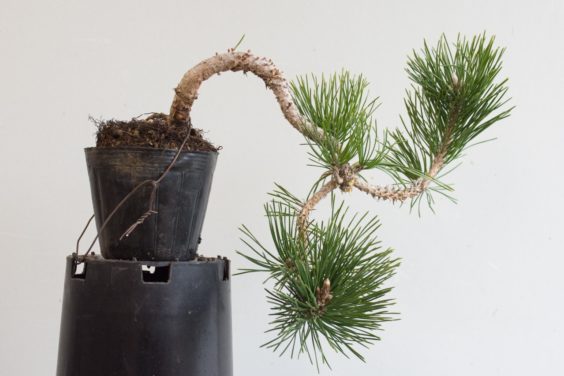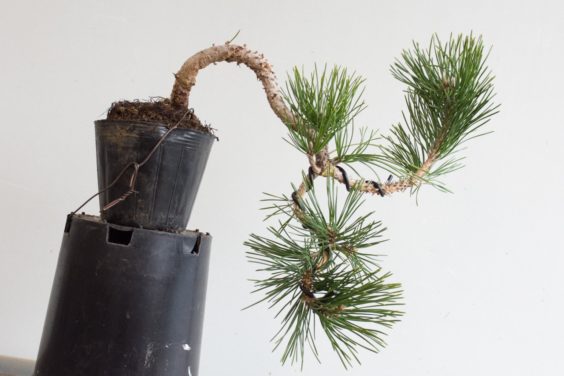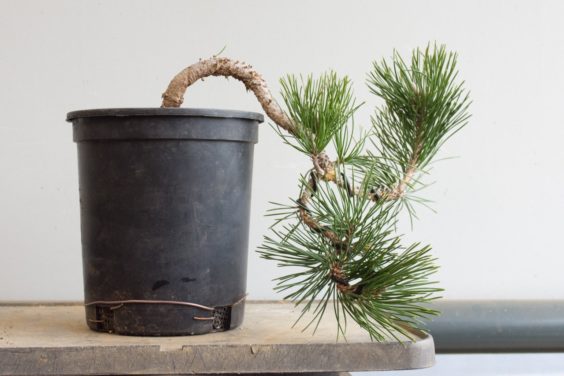After creating many Japanese black pines in a variety of styles, I realized, last year, that I hadn’t made many cascade pines. When it came time to wire a batch of young trees, I wired several trunks downward. A year later, they looked like this.
Young pine
The first thing I noticed when I sat down to work on the tree was that many branches emerged from the same spot. That was fine for last year’s growth as it helped thicken the trunk, but left alone, the area would produce unsightly swelling.
Many branches emerging from the same spot
I removed most of these branches and left two long shoots and two small ones. One long shoot would form the future trunk, the other would serve as an escape branch. The small branches may be used in the future as primary branches.
After thinning the shoots
This made wiring simple. I added a single wire to give some shape to the selected trunkline.
After wiring
You may have noticed I used aluminum wire instead of copper. I often use aluminum wire when training young trees because it’s less expensive than copper.
As the pot was getting small for the tree, I repotted it into a standard 1 gallon nursery container. I used pumice for drainage, medium sized soil in the middle, and small sized soil near the surface.
After repotting
That’s it for this year. As fast growth is the goal at this point, I’ll feed the tree heavily, and take care to remove the wire just as it starts to cut in.
Subscribe to Bonsai Tonight
New Posts Delivered Every Tuesday and Friday





Lani says
Jonas,
I appreciate the step by step words and pictures in your pine progression blog. Because you’ve shared your growing progress, I can see that it is possible and enjoyable to train and grow black pine and am giving it a go. Spring can’t get here soon enough! How old is the tree in this picture? Is it a tree that you started from seed?
Jonas Dupuich says
Thanks Lani! My best guess is that the pine is 4 years old now.
Bruce Harris says
When are “young” pines to old to bend or can they be bent but with thicker wire? I received a few gift pines that were not bent and were about for or five years old with about 1″ diameter trunks. Can they be bent after applying raffia?
Jonas Dupuich says
Hi Bruce – young or old pine trunks and branches can be bent even when they are fairly thick. Raffia, rebar, large wire and/or guy wires can help when wire alone can’t do the trick.